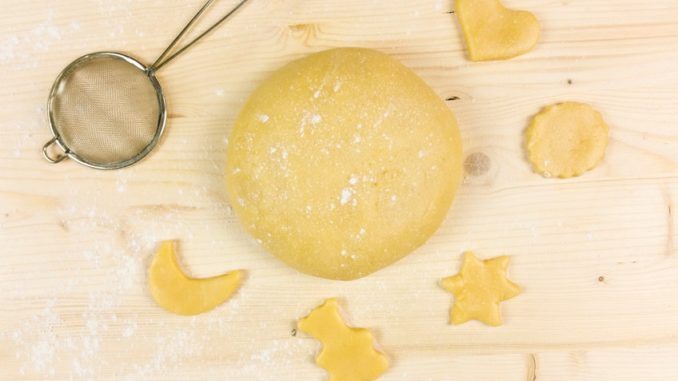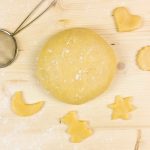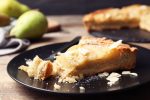
Shortcrust pastry is usually the basic pastry base for savoury tarts. It is simple to make but should be a common skill of all chefs involved in baking. It is a very easy skill to pick up.
Generally, it should take between 5 and 10 minutes to make with extra time required for its chilling. No sugar or egg is used as described in sweeter versions of this pastry.
Equipment:
-
- tart tins: 22 to 25cm (8 3/4 to 10 in.) single tart tin or 6 deep fluted 10cm (4in.) tart tins or even 12 muffin-tin size tarts
- food processor
- saucepans
- knives
- palette knife
- small bowls
- wooden spoons/ spatulas
Ingredients:
- 200g plain flour (Europe) or all-purpose flour (USA)
- 100g salted butter, cubed and diced
- a pinch of salt
- cold water
It makes 300g of pastry and the amounts can be altered accordingly. The key is making sure the ratio of flour to butter is always maintained.
Preparation:
- The flour is sifted into a large bowl and then 100g of cubed or diced butter is added.
- Manual technique: The flour and butter are mixed together using the fingertips to form a mixture that looks like fine breadcrumbs.
- A pinch of salt is added along with 2 or 3 tablespoons of cold water. The crumb is mixed together to form a dough. Too much water will produce a harder pastry although that might be required.
- Sprinkle flour on a cool surface such as a worktop or wooden board and knead the dough quickly on this until it forms a firm ball. Don’t overwork as it can make an extremely dense pastry. Knowing when to stop is when the dough has that sense of firmness. Here is where art takes over!
- The dough is wrapped in cling film and chilled until needed for rolling and then filling.
Comments
The general proportion is a ratio of 2:1 of flour to butter.
Too much flour and the pastry will be too dry and very crumbly but if you add an extra 25g in this recipe then the dough is actually easier to work with.
A food processor can be used to create the crumb of the pastry but most chefs and cooks use their fingers. If you use the food processor for making the crumb just add the flour and butter and mix until it creates those fine breadcrumbs. Then add the water as in step 4 but a little at a time.
If you make additions then they are added at step 3 along with the salt. Some chefs like to add stuff like a teaspoon of dried thyme or rosemary or indeed any other herb including chili, and a teaspoon of bouillon or vegetable stock powder. This adds extra oomph to the savoury flavour of the pastry.
If you use unsalted butter, then more salt would be needed because salt is important in altering the chemical properties of the starch and gluten in the pastry.
Most recipes rely on a baking temperature between 180-200ºC.


Leave a Reply